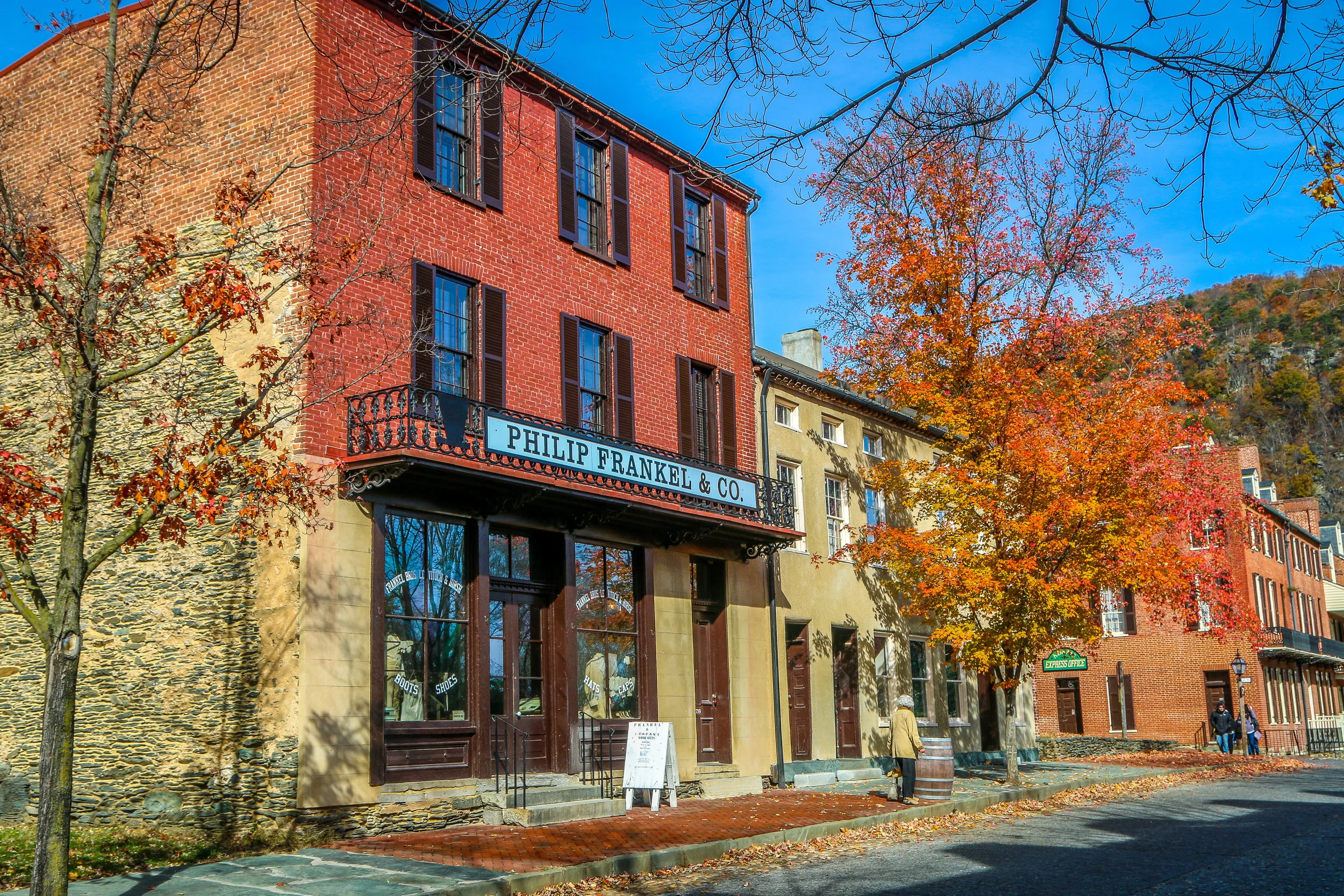“Almost heaven, West Virginia
Blue ridge mountains, Shenandoah river
Life is old there, older than the trees
Younger than the mountains, blowing like a breeze”
Day One, Mile 70, Harper's Ferry, West Virginia
When Bill Danert, Taffy Nivert and John Denver penned the lyrics to the song Country Roads, Take Me Home they were trying to capture the spirit of a place. Many critics have said that the song more clearly depicts Western Virginia the region than West Virginia the state. When you visit Jefferson County, West Virginia though, you get country roads, the Blue Ridge Mountains and the Shenandoah River. Seeing the lyrics from West Virginia's most iconic song come to life in front of me in one breathtaking view from Maryland Heights or from Split Rock just outside Harpers Ferry was truly special and seemed the perfect way to begin my exploration of the Mountain State.
Harpers Ferry is just barely over an hour's drive from Washington D.C. but it seems a world away. The town got its start back in 1747 when Robert Harper began a ferry service across the Potomac River. Since that humble beginning it has had a pretty amazing run.
From a traveler's perspective the photo above is a fascinating look at an intense cross-section of geography. You are looking at three states: West Virginia, Virginia and Maryland, and you can see two rivers: The Shenandoah and the Potomac. Those are easy to see. Look more closely and you will see the Chesapeake and Ohio Canal which once brought coal from Cumberland, Maryland to the Chesapeake Bay. You'll also see the Baltimore and Ohio Railroad Bridge. The B&O is one of the oldest railroads in the country and connects Baltimore with the Ohio River in Wheeling, West Virginia. Look even closer and the other bridge is part of the Appalachian Trail which dates to 1921, runs 2200 miles and connects Maine to Georgia. It is one of the longest hiking-only trails in the world. All of that, along with the Blue Ridge Mountains in the background makes for quite an interesting view.
On March 16th, 1803, Meriwether Lewis arrived in Harper's Ferry where he would outfit his expedition before joining forces with William Clark and heading west with their Corps of Discovery. Harper's Ferry at that time was on the frontier of America. Visiting now, that's hard to believe, but very true. Harpers Ferry had one of the westernmost armories in the new country, and with its river connections to both Washington D.C. points west along the Potomac, it seemed like a perfect place to take on supplies. While there, Lewis worked alongside the armory mechanics to design and build a collapsible canoe. One of Lewis' mentors and the founder of the expedition, Thomas Jefferson had once stood above Harpers Ferry and peered out down the Potomac River and commented that "the scene is worth a voyage across the Atlantic". I'm sure Lewis agreed with him.
In 1859, John Brown would lead a major rebellion against the institution of slavery - his target: the armory at Harpers Ferry. This is considered by many to be the opening blow of the American Civil War. While the rebellion was unsuccessful and it would cost John Brown and several others their lives, the building where they took cover has had an interesting life of its own. It served as a prison and a powder magazine during the American Civil War, during which Harpers Ferry changed hands between the Union and the Confederacy EIGHT times. In 1891 it would be dismantled and moved to Chicago to be displayed at the World's Fair. In 1894, it was dismantled again and brought back to Harpers Ferry where land was purchased to rebuild it. The B&O shipped it for free. Storer College, a college established in Harpers Ferry after the war to educate freed slaves purchased the building and moved it to their campus in 1909. Finally, in 1960 the National Park Service bought the building and moved it back to within 150 feet of its original location. After its return to town, the fort became a rallying point for civil rights activists. I can't think of many buildings this size in the country that have quite the history of John Brown's Fort.
Today, Harper's Ferry is part of the National Park System. From its website, "The National Park Service preserves unimpaired the natural and cultural resources and values of the National Park System for the enjoyment, education, and inspiration of this and future generations." Places like Harpers Ferry are important. In writing this, I only described some of the highlights, but there is so much more to this tiny town than I could possibly write about here. Parks like Harpers Ferry and like so many others that I plan to write about over the next few years must be protected so that we can learn from them and enjoy them in person, not just read about them in books. Please support our National Parks with your donations and your votes. They are the keepers of America's greatest treasures.

